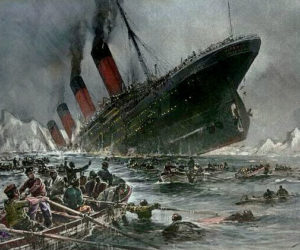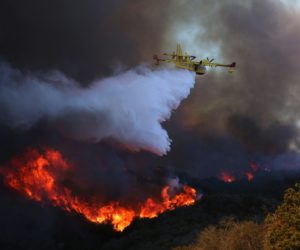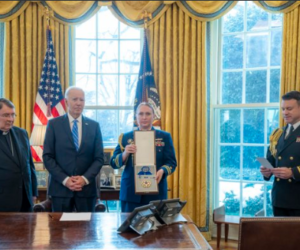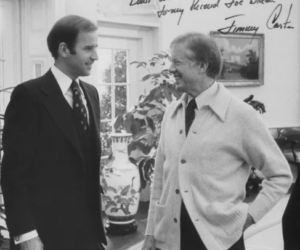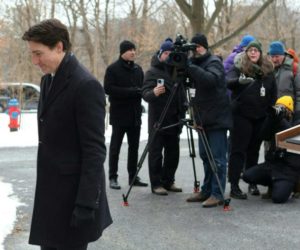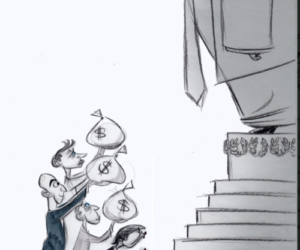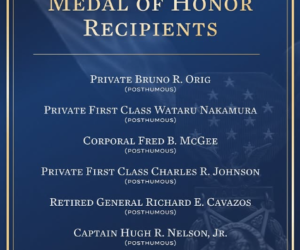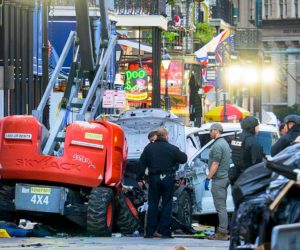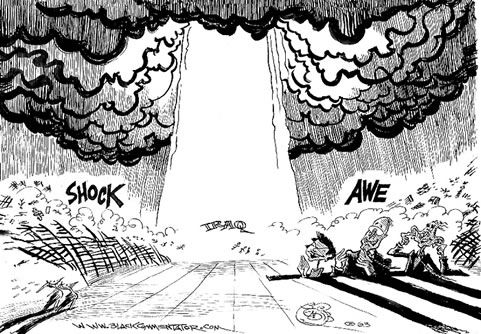
After shamelessly proclaiming from rooftops that situation is normalising in Iraq, the US administration would find it difficult to explain why it has to resort to “shock and awe” strategy even after five years of occupation of that country. As Firedoglake puts it succinctly, “That the insurgency — five years after ‘Mission Accomplished’ — is still powerful and entrenched enough to draw airstrikes of that size, that close to Baghdad, should tell Americans everything they need to know about how completely futile this war is.”
The Associated Press news story: “U.S. warplanes unleashed one of the most intense airstrikes of the Iraq war Thursday, dropping 40,000 pounds of explosives in a thunderous 10-minute onslaught on suspected al-Qaida in Iraq safe havens in Sunni farmlands south of Baghdad.
“The mighty barrage — recalling the Pentagon’s ‘shock and awe’ raids during the 2003 invasion — appeared to mark a significant escalation in a countrywide offensive launched this week to try to cripple remaining insurgent strongholds.”
No one is bothered, and anxious to ask, that in such “shock and awe” brutal assaults how many innocent men, women and children are slaughtered. There are still dimwits who believe that such strategy can continue for another century!!! This reminds one of the old adage that aptly describes the dimwits…those who bring down the entire house to kill a mouse!!!
Swaraaj Chauhan describes his two-decade-long stint as a full-time journalist as eventful, purposeful, and full of joy and excitement. In 1993 he could foresee a different work culture appearing on the horizon, and decided to devote full time to teaching journalism (also, partly, with a desire to give back to the community from where he had enriched himself so much.)
Alongside, he worked for about a year in 1993 for the US State Department’s SPAN magazine, a nearly five-decade-old art and culture monthly magazine promoting US-India relations. It gave him an excellent opportunity to learn about things American, plus the pleasure of playing tennis in the lavish American embassy compound in the heart of New Delhi.
In !995 he joined WWF-India as a full-time media and environment education consultant and worked there for five years travelling a great deal, including to Husum in Germany as a part of the international team to formulate WWF’s Eco-tourism policy.
He taught journalism to honors students in a college affiliated to the University of Delhi, as also at the prestigious Indian Institute of Mass Communication where he lectured on “Development Journalism” to mid-career journalists/Information officers from the SAARC, African, East European and Latin American countries, for eight years.
In 2004 the BBC World Service Trust (BBC WST) selected him as a Trainer/Mentor for India under a European Union project. In 2008/09 He completed another European Union-funded project for the BBC WST related to Disaster Management and media coverage in two eastern States in India — West Bengal and Orissa.
Last year, he spent a couple of months in Australia and enjoyed trekking, and also taught for a while at the University of South Australia.
Recently, he was appointed as a Member of the Board of Studies at Chitkara University in Chandigarh, a beautiful city in North India designed by the famous Swiss/French architect Le Corbusier. He also teaches undergraduate and postgraduate students there.
He loves trekking, especially in the hills, and never misses an opportunity to play a game of tennis. The Western and Indian classical music are always within his reach for instant relaxation.
And last, but not least, is his firm belief in the power of the positive thought to heal oneself and others.

